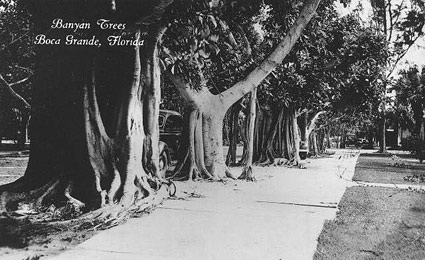
Banyan Street
Boca Grande, Florida
Banyan Tree Allée Boca Grande, Florida

Courtesy Boca Grande Historical Society and Museum
history
In 1878, John Wall and Albert Gilchrist purchased the central portion of Florida’s Gasparilla Island from the United States government with hopes of developing the land for residential use. By the early 20th century, three distinct villages developed on the barrier island. The unincorporated Village of Boca Grande, located on the north side of the island, became a retreat for wealthy, winter residents and visitors who stayed at the hotel that would become the Gasparilla Inn.
While Gasparilla was known to many as an exclusive vacation destination, much of the island’s early economic development was due to the presence of the American Agricultural Chemical Company. The company completed Gasparilla’s Charlotte Harbor and Northern Railroad in 1907, which created better access to the communities. Gasparilla Island continued to prosper and, in 1915, landscape architect Carl Rust Parker was hired to prepare the “Plan for Subdivision of Boca Grande.” As part of the overall formal improvements made to the community during this time, the employees of Boca Grande Land Company, a subsidiary of the American Agricultural Chemical Company, began installing tree allées of differing species along streets throughout Boca Grande. The Banyan Tree (Ficus benghalensis) Allée was planted along one block of Second Street, now known as Banyan Street, as part of that project.